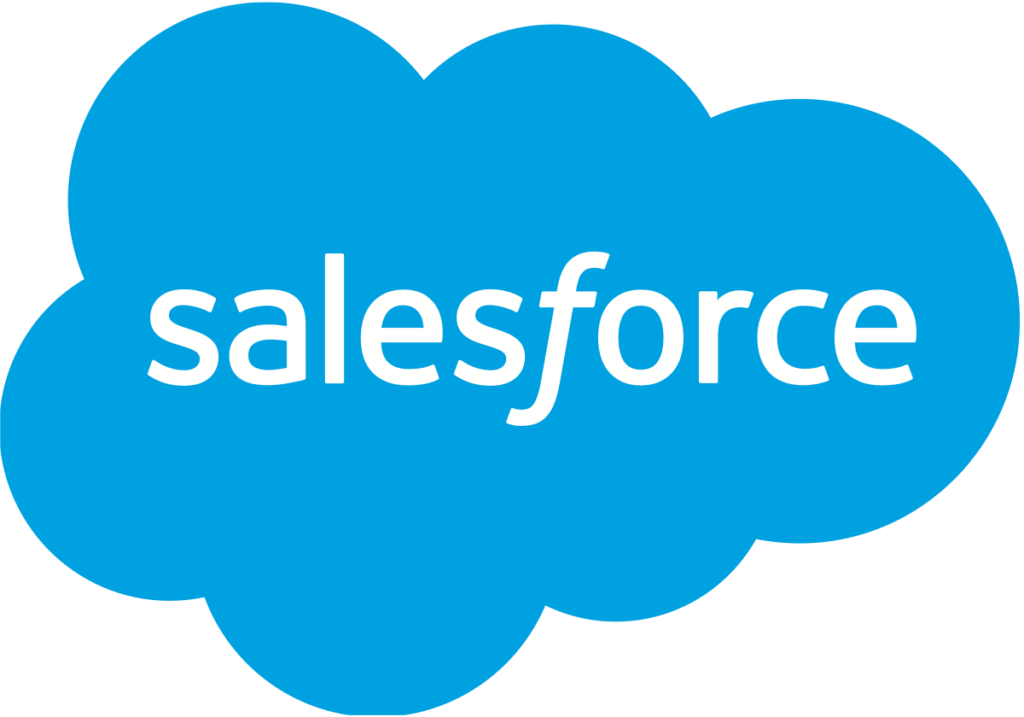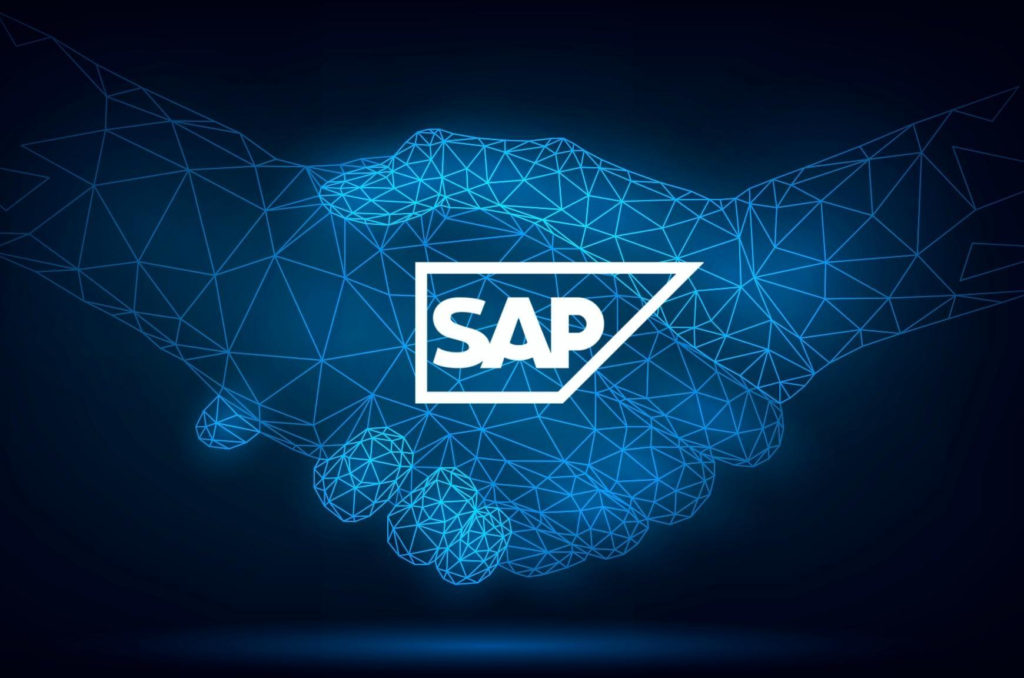We will explore the top competitors of Microsoft Power Apps & Power Platform. Before we start, make sure to subscribe to CRM Crate so that you can stay up to date in the field of Power Platform.

In the rapidly evolving landscape of low-code and no-code development platforms, Microsoft Power Apps / Power Platform stands out as a front-runner. However, as the demand for versatile application development tools grows, several competitors have emerged, each offering unique features and capabilities. In this blog post, we will deep dive into the top competitors of Power Apps, exploring their strengths and distinguishing features.
Salesforce Lightning Platform
Salesforce Lightning Platform, formerly known as Force.com, is a low-code solution tightly integrated with Salesforce’s broader ecosystem. It excels in building applications that leverage Salesforce data and functionality. With a strong emphasis on collaboration and process automation, Salesforce Lightning Platform competes effectively, especially within organizations heavily invested in the Salesforce ecosystem.

Below are the key features of Salesforce Lightning Platform:
- Low-Code Development Concept: Salesforce Lightning Platform is designed with a low-code approach in mind, allowing application makers to build applications with minimal coding. This empowers makers with varying technical backgrounds, including business analysts and administrators, to contribute to application development.
- Smooth & Lightning Experience: The platform introduces the Lightning Experience, a modern and user-friendly interface that enhances the overall user experience. This interface provides a responsive and customizable environment for building and interacting with applications.
- App Builder: The Lightning App Builder is a visual development tool that enables app makers to create custom applications using a drag-and-drop interface. This makes it easier to design and customize user interfaces without extensive coding.
- Process Builder: Process Builder is a tool within the Lightning Platform that allows makers to automate their business processes through a visual representation of workflows. This helps in streamlining and automating complex business processes.
- Integration: Salesforce Lightning Platform supports flexible integration with external systems and data sources. It provides APIs (Application Programming Interfaces) and connectors to facilitate seamless integration with other applications, databases, and services.
- Security / Compliance: As part of the Salesforce ecosystem, the Lightning Platform adheres to high security and compliance protocols. It provides features such as user authentication, access controls, and encryption to ensure data security.
- Mobile App Development: The platform supports the development of mobile applications, allowing makers to create custom mobile device solutions that can be accessed on various devices. This is crucial for organizations seeking to provide a mobile-friendly experience for their makers.
OutSystems
OutSystems is a robust low-code platform known for its scalability and enterprise-grade capabilities. With a focus on accelerating application delivery, OutSystems provides a comprehensive solution for both web and mobile app development. Its visual development environment and pre-built templates cater to diverse business needs, making it a compelling alternative to Power Apps.

Below are the key features of Outsystems:
- Low-Code Development: OutSystems provides a low-code approach, which means that makers can build applications using visual development interfaces, drag-and-drop components, and pre-built templates. This significantly reduces the amount of manual coding required, accelerating the development process.
- Visual Development Environment: The platform provides a visual development environment that allows developers and business users to collaboratively design and build applications. This environment includes visual modeling tools for designing user interfaces, logic, and data models.
- Rapid Application Deployment: OutSystems emphasizes rapid application deployment, enabling organizations to bring applications to market quickly. This is particularly beneficial for businesses that need to respond rapidly to changing market scenarios or evolving customer needs.
- Integration Capabilities: OutSystems supports integration with a variety of external systems, databases, and APIs. This facilitates seamless connectivity between applications and existing enterprise infrastructure.
- Cross-Platform Compatibility: Applications developed on the OutSystems platform are designed to be compatible with various devices and operating systems, including web browsers, mobile devices, and desktop environments. This ensures a consistent end user experience across multiple platforms.
- Scalability: OutSystems is scalable and can support the development of applications ranging from simple solutions to complex enterprise-grade systems. This makes it suitable for a wide range of projects and organizational needs.
- App Lifecycle Management: The platform provides tools for application lifecycle management (ALM), covering aspects such as version control, testing, deployment, and monitoring. This ensures that applications can be effectively managed throughout their entire lifecycle.
- Security: OutSystems places a strong emphasis on security, incorporating features such as role-based access control, encryption, and compliance with industry standards to protect applications and data.
Firebase
Firebase is a comprehensive mobile and web application development platform developed by Google. It provides a variety of tools and services that assist developers in building, improving, and scaling applications. Firebase is known for its ease of use, real-time database capabilities, and the seamless integration of multiple services.

Below are the key features of Firebase:
- Realtime / Synchronous Database: Firebase includes a NoSQL cloud-based database that enables developers to store and synchronize data in real-time without any lag. This is particularly useful for applications requiring collaborative features or live updates.
- Improved Authentication: Firebase offers authentication services that support various authentication providers, including email/password, Google, Facebook, and more. This helps developers implement secure user authentication within their applications.
- Cloud Firestore: Firestore is Firebase’s scalable and flexible NoSQL document database. It allows developers to store, sync, and query data for their applications, providing a more advanced alternative to the Realtime Database.
- Cloud Functions: Firebase Cloud Functions allow developers to run backend code in response to events triggered by Firebase features and HTTPS requests. This serverless computing feature helps in extending the functionality of applications.
- Hosting: Firebase Hosting provides a platform for hosting static and dynamic web applications. It offers content delivery over a content delivery network (CDN) to ensure fast and secure delivery of web assets.
- Cloud Messaging (FCM): Firebase Cloud Messaging is a cloud solution for messages on iOS, Android, and web applications. It enables developers to send push notifications to users and engage with them in real-time.
- Authentication: Firebase Authentication provides a secure and easy-to-implement authentication system, supporting various identity providers, email/password authentication, and anonymous sign-ins.
- Analytics: Firebase Analytics allows developers to gain insights into user behavior and app performance. It provides analytics on user engagement, user demographics, and in-app events.
- ML Kit: Firebase ML Kit offers machine learning capabilities for mobile and web applications. It provides ready-to-use APIs for tasks like image labeling, text recognition, and language identification.
- Performance Monitoring: Firebase Performance Monitoring helps developers monitor the performance of their applications, identify bottlenecks, and optimize user experiences.
SAP Extension Suite
SAP Extension Suite is a set of tools and services provided by SAP (Systems, Applications, and Products in Data Processing) that aims to empower organizations to extend and enhance their existing SAP applications or build new applications to meet specific business requirements. It is part of SAP’s broader strategy to enable business innovation and digital transformation.

Below are the key features of SAP Extension Suite:
- SAP Fiori Elements: SAP Fiori Elements is a framework that allows developers & makers to build responsive and consistent user interfaces for SAP applications. It provides pre-built UI elements and patterns to accelerate the development of modern, intuitive, and user-friendly interfaces.
- SAP Business Application Studio: This is an integrated development environment [IDE] provided by SAP for building, testing, and deploying applications. It supports multiple coding languages and frameworks, enabling developers to create applications that integrate seamlessly with SAP systems.
- SAP Fiori Tools: SAP Fiori Tools complement SAP Business Application Studio by offering additional features for designing, developing, and deploying Fiori applications. These tools aim to streamline the development process and improve the overall Fiori application lifecycle.
- SAP Business Application Programming Model (CAP): CAP is a framework that simplifies and boosts the development of multi-cloud business applications. It provides a set of best practices, guidelines, and tools for building applications that can run on various infrastructures.
- SAP Extension Factory: SAP Extension Factory allows organizations to extend and enhance SAP solutions by connecting them with external services, microservices, and third-party applications. It facilitates the creation of intelligent business processes that span across different systems.
- SAP BTP, Kyma Runtime: Kyma is an open-source project that extends Kubernetes to enable a flexible and easy-to-use foundation for making cloud-native applications. SAP BTP (Business Technology Platform) integrates Kyma Runtime to support the development and deployment of cloud-native extensions.
- SAP Fiori Launchpad: The Fiori Launchpad is a web-based entry point for accessing and managing SAP Fiori applications. It provides a centrally managed, role-based hub for users to launch applications, view dashboards, and access various business tasks.
Mendix
Mendix is another one of the competitor in the low-code arena, emphasizing a collaborative mindset towards application development. It is a visual development tools, coupled with advanced integration options, empower both developers and end users to create sophisticated applications. Mendix’s flexibility and support for various deployment options make it a noteworthy contender.

Below are the key features of Mendix:
- Low-Code Approach: Mendix employs a low-code development, which means that users can visually design and develop applications using a drag-and-drop interface, pre-built templates, and reusable elements. This approach simplifies the development process and reduces the reliance on traditional coding.
- Visual Development Environment: The platform provides a visual development environment where users can design user interfaces, define business logic, and data model. This visual approach enables a wide range of users, including those without extensive coding experience, to participate in application development.
- App Services: Mendix offers a large range of built-in services and modules that simplify common aspects of application development, such as user authentication, data storage, and integration with external systems. These services are designed to speed up development and ensure best practices.
- Multi-Channel Deployment: Applications built with Mendix can be deployed across various channels, including web browsers and smartphone devices. This multi-channel deployment capability ensures that applications are accessible and functional on different platforms.
- Collaborative Development Approach: Mendix supports collaboration between developers and non-developers within a working team. This collaborative approach allows business analysts, designers, and other stakeholders to actively participate in the development process, fostering better communication and alignment with business goals.
- Improved Integration Features: Mendix provides integration capabilities to connect with external systems, databases, and Web APIs. This allows for the creation of applications that leverage existing data and services within an organization.
- Easy App Lifecycle Management: The platform includes tools for application lifecycle management (ALM), covering areas such as version control, testing, deployment, and monitoring. These tools ensure that applications are well-managed throughout their lifecycle.
- Scalability: Mendix applications are designed to be scalable, allowing organizations to start with smaller projects and scale up as needed. This makes Mendix suitable for a wide range of application development scenarios.
As companies seek to expedite application development and empower citizen developers, the competition among low-code platforms intensifies. While Microsoft Power Apps continues to lead the way, competitors like OutSystems, Mendix, and Salesforce Lightning Platform offer compelling alternatives, each with its unique strengths. The choice between these platforms ultimately depends on specific business requirements, development preferences, and the need for integration with existing systems.





